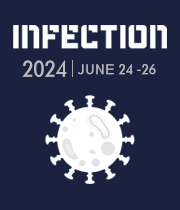Title : Post COVID-19 ocular manifestations
Abstract:
Background: The severe acute respiratory syndrome coronavirus 2 (SARS-CoV-2) led to the severe Corona Virus Disease 2019 (COVID-19) outbreak which caused enormous health and economic problems worldwide. Some people especially those who had severe COVID-19 are experiencing organ damage and other disorders post COVID -19 in which ocular complication is one of the common complication seen in these patients.
Purpose: This review aims to sum up the ocular complications of COVID-19, the possible pathogenesis, and preventive strategies.
Main text: COVID-19 can cause conjunctival congestion, tear overflow, and conjunctival edema and blurred vision. The virus may make a patient more susceptible to thrombotic conditions that affect venous and arterial circulation. Significantly, there are a number of ocular side effects following the COVID-19 vaccination, such as herpetic keratitis and facial nerve palsy, which have been reported. Doctors are still learning how COVID affects the eyes. But it’s clear that some people with COVID experience inflammation throughout their body. This inflammation can cause blood clots to form. These clots may travel through the body and reach the veins, arteries and blood vessels of the eye.
When eye problems occur, they tend to develop within 1 to 6 weeks of experiencing COVID symptoms. COVID-19 also effects retina leading to disorders like Cotton wool” spots, Eye stroke (also called retinal artery occlusion), Retinal vein occlusion, Retinal hemorrhage. Tear samples and conjunctival swabs may be helpful samples for the diagnosis of ocular SARS-CoV-2 infection.
Results: Certain people are more likely to develop these problems than others. People with the following conditions are at greatest risk: Diabetes, High blood pressure, Blood disorders
About 1 in 10 people develop eye symptoms when they have a COVID-19 infection.
Studies show 11.64% of COVID-19 patients had ocular surface manifestations. Ocular pain (31.2%), discharge (19.2%), redness (10.8%), and follicular conjunctivitis (7.7%)
Conclusion: The eye could be a new route of infection, and finding ways such as effective environmental disinfection, scientific administrative control management, qualified personal protection and other measures to protect the eyes could further reduce the risk of infection. A larger-scale, crowd-based research with standardized investigation methods is required on this topic to come up with effective treatment strategies for eye complications associated with COVID-19.



